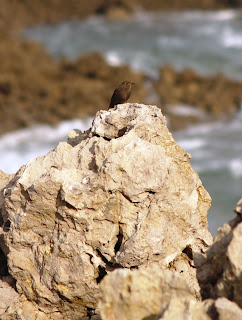Along with occassional Harbour porpoise (Phocoena phocoena), which are not birds, on the ferry crossing between Portsmouth and Santander I spotted a Song thrush (Turdus philomelos) hitching a ride whilst Northern gannet (Morus bassanus) got down to serious work. In the Douro region of Northern Portugal, Greenfinch (Carduelis chloris), Great tit (Parus major), Pied wagtail (Motacilla alba) and Stonechat (Saxicola torquata) were much in evidence. Cormorant (Phalacrocorax carbo) plied their trade on the river. On the return, on the coast near Santander a Black wheatear (Oenanthe leucura) was vocal.
This blog may help people explore some of the 'hidden' issues involved in certain media treatments of environmental and scientific issues. Using personal digital images, it's also intended to emphasise seasonal (and other) changes in natural history of the Swansea (South Wales) area. The material should help participants in field-based modules and people generally interested in the natural world. The views are wholly those of the author.
Subscribe to:
Post Comments (Atom)
-
I n the UK and US, a pparently popular and successful vegan/vegetarian restaurants are reportedly closing or adding meat to their menus ( ...
-
Early ripening fruit may seem convenient but some folk think it confirms environmental stress. There's also a possibility th...










%20mating%20NWCW.jpg)


No comments:
Post a Comment